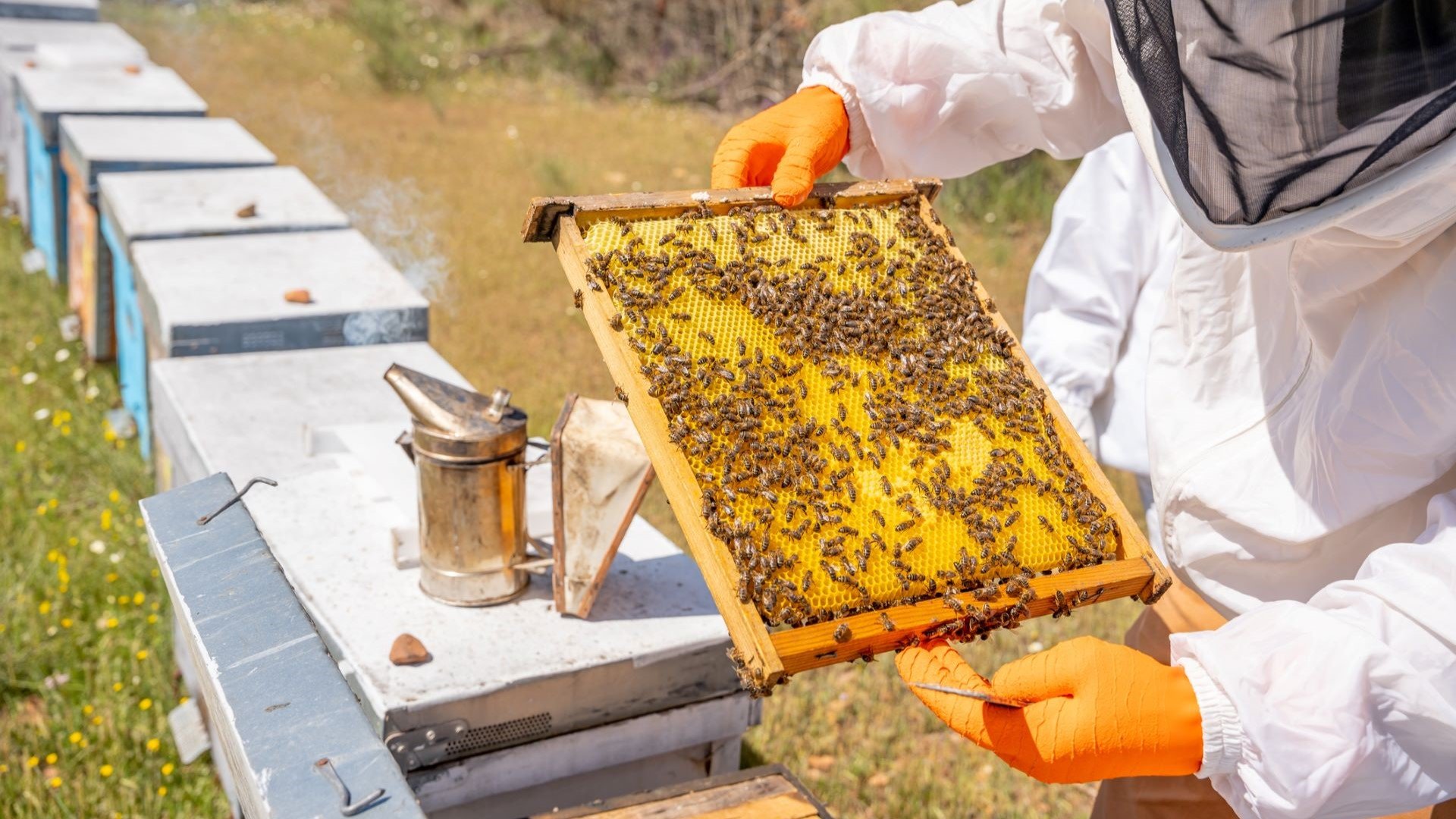Beekeeping on Campus

Many K-12 schools, colleges, and universities are establishing apiaries — places housing hives for honeybees — on campus. Keeping bees can be beneficial and rewarding, but a successful experience requires advance planning.
Institutions with no prior apiary experience should explore general guidance for first-time beekeepers. Programs at the University of Georgia and the University of Missouri offer advice on starting bee colonies, including suggestions about the preferred number, construction, location, and care of hives.
Determine the Need to Register, Inspect Apiaries
Most states require beekeepers — both hobbyists and those raising bees for commercial gain — to register their apiaries. This is often low cost or free.
Many states also require or allow for periodic inspections by an apiarist or entomologist to ensure hives and related equipment are free of infectious or contagious diseases and pests. Inspections are especially important because the U.S. honeybee population has suffered significant losses due to Colony Collapse Disorder (CCD) and other problems since 2006. Check with your state’s agriculture department for registration or inspection requirements. Most states have associations for beekeepers or honey producers that also may be helpful.
Also check with your local jurisdictions to determine if any county or city requirements, such as zoning ordinances, affect beekeeping on campus.
Prevent and Respond to Bee Stings
Potential allergies to bee venom mean institutions with apiaries should plan carefully to prevent stings and establish emergency response protocols.
Bees rarely sting unless they are disturbed, so locate apiaries away from heavily trafficked areas. Provide clear signage warning students, employees, and visitors about the presence of bees. Require those working with the bees to wear appropriate protective gear. Consider erecting barriers to prevent unauthorized people from approaching hives.
Because stings still may occur, post emergency protocols to follow if anyone who is allergic suffers a sting.
Note that in severe cases, stings can result in anaphylactic shock. The Mayo Clinic describes common symptoms of and treatment for this allergic reaction. Epinephrine, which is often used to treat anaphylaxis, requires a prescription. People with known allergies should carry their own kits or know how to quickly access one.
To comply with state or local requirements, many public K-12 schools stock epinephrine, usually EpiPens, that school nurses and other trained employees can administer to students suffering from anaphylactic shock that bee stings, food, or other allergens can cause. If your school plans to implement this type of policy, consult with counsel and ensure your medication dispersal policy covers storage and use of epinephrine, including:
- Who is authorized to administer it and under what conditions
- Who is responsible for monitoring security and the drug’s expiration date
- Communicating the policy to the campus community
More From UE
Checklist: Administering Medications
Additional Resources
American Beekeeping Federation: Resources
American Honey Producers Association: Resources
Bee Research Labs, U.S. Department of Agriculture, Cooperative Extension System
American College of Allergy, Asthma and Immunology: Insect Sting Allergies
About the Author
-

Hillary Pettegrew, Esq.
Senior Risk Management Counsel
Hillary’s areas of expertise include employment law, Title IX, and study abroad issues. Before joining the Risk Research team, she practiced employment law and handled UE education liability claims.